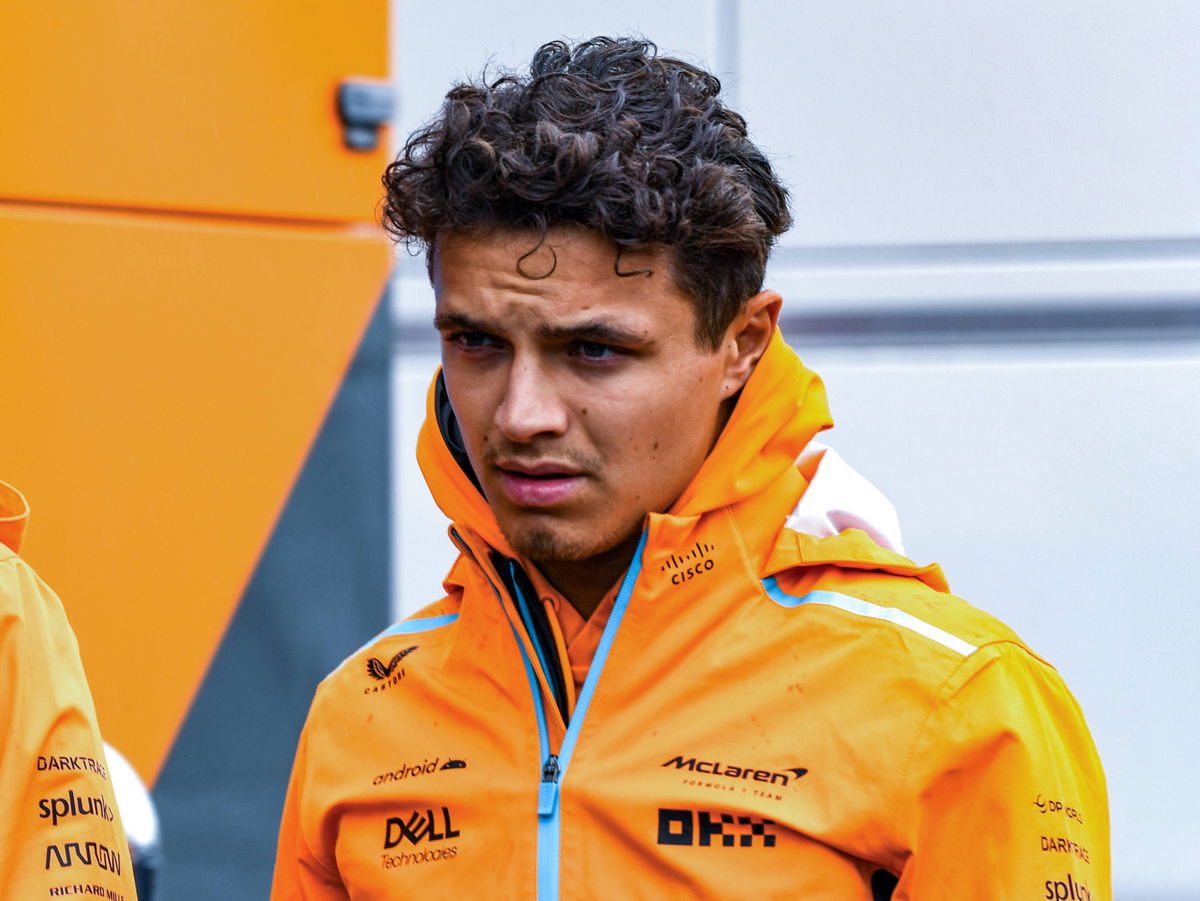
Imago
Lando Norris, McLaren F1 Team, Spa, Belgium (Credits: Imago)

Imago
Lando Norris, McLaren F1 Team, Spa, Belgium (Credits: Imago)
McLaren came to the Belgian GP off the back of two (and a half) very good race weekends—at Hungary, Silverstone, and Austria (only for Lando Norris)—compared to where it was at the start of the season. And with two second-place finishes for Norris and almost-podiums for Oscar Piastri, the Woking squad looked to continue its momentum at Spa-Francorchamps, a circuit McLaren cars have come to love because of the cool and wet-weather conditions. But the upgrade package that catapulted it back toward the front of the field was, ironically, the reason McLaren lost the momentum it had gained. And Team Principal Andrea Stella explained why.
Watch What’s Trending Now!
Conditions at Spa on Friday and Saturday were everything McLaren would’ve hoped for. And owing to the performance of the MCL60 in the wet, Piastri achieved his first top-three finish in F1 during the Sprint with a P2. However, Norris struggled to replicate his form from previous rounds and match Piastri, especially after a trip into the gravel during qualifying on Friday. While the Papaya team would’ve hoped for conditions similar to Friday and Saturday for the main race, Sunday wasn’t as kind to them. And, well, their high-downforce setup wasn’t either.
Stella: “The real correlation is the fact that because we were busy working on other things, we didn't have the time to work on low-drag rear wings.”
— McLaren F1 News 🏴🇦🇺 (@TheMcLarenZone) August 3, 2023
ADVERTISEMENT
The MCL60 was the slowest car on the straights in Spa, and, unfortunately for Norris (Piastri retired his car after the first lap), the first and third sectors are predominantly straights. And after starting in P7, he dropped to P16 in no time. When discussing McLaren’s setup after the race, Andrea Stella said, “In perfect hindsight, we could have tried to find some other solution to reduce the drag on the car. We know how much efficiency we would have shed, but it could be that we wouldn’t have been able to achieve [the Sprint results] if we had made this choice.”
But Stella revealed why McLaren couldn’t do as well as it had hoped in Belgium. He explained, “The real correlation is the fact that because we were busy working on other things (referring to the upgrades), we didn’t have the time to work on low-drag rear wings.” It’s no secret that the high-drag rear wing cost Norris in the race’s early stages. But that only made him opt for a different strategy, which helped him make a comeback.
ADVERTISEMENT
The strategy that helped Lando Norris climb up the field
After the first few laps that saw him drop three places in three laps, it became clear that the race pace of the MCL60 in dry conditions was no match to the other cars because of its high downforce setup. Norris even said after the race, “Everyone was overtaking me before the DRS activation zone.” And while McLaren’s race and momentum looked like they could only get worse from there, Norris’ aggressive strategy played into his hands.
ADVERTISEMENT
A superb stint to secure points, @LandoNorris. 👏#BelgianGP 🇧🇪 pic.twitter.com/UUMGuUxkfI
— McLaren (@McLarenF1) July 30, 2023
After a disappointing first and second stint on Medium and Hard tires, Norris pitted for Soft tires when everyone was waiting for it to start raining to shift to intermediates. But proper rain never came, and in all the time everyone was waiting, Norris was making up time on every lap. And because no one covered him with their own pit stop, his stop was a mega undercut. That, along with his overtakes because of his tire advantage, helped him climb from P16 to P7 and finish in the points in a race McLaren should’ve scored none.
Watch This Story: Lando Norris Evokes Senna Comparisons with Unique Quality, Shines Bright at British Grand Prix
ADVERTISEMENT
The summer break should give McLaren time to make amends for its underwhelming performance in Spa. But even though Lando Norris lost his podium-scoring momentum, he and McLaren didn’t lose their points-scoring streak and would hope to come back stronger in Zandvoort.
ADVERTISEMENT
ADVERTISEMENT
ADVERTISEMENT

